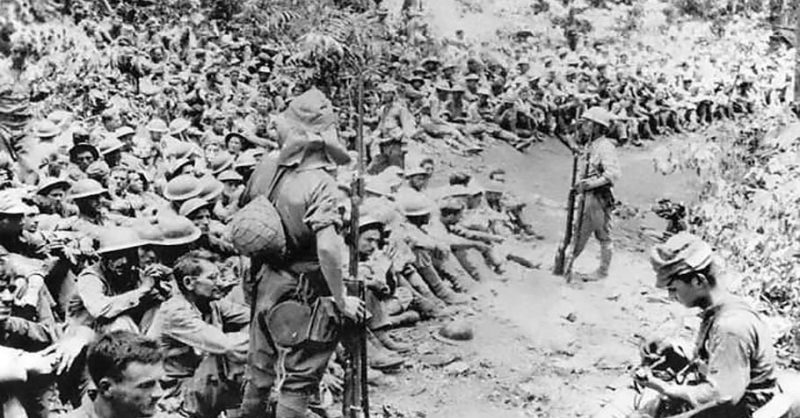Albert Brown was told by his doctor that he wouldn’t live to see his 50th birthday. The strain of years spent in a Japanese labor camp during World War II, and the toll of the infamous Bataan Death March that led there, were too much for his body. But Brown lived to be 105, the embodiment of the power of a positive attitude no matter what the odds.
Brown, a former dentist, was nearly 40 years old when he endured the 65-mile march in 1942. 78,000 prisoners of war were forced to walk from Bataan to a Japanese labor camp in Manila. Estimates put the death toll on the march at 11,000 men. Many of the soldiers were denied medical treatment, food, and water. Prisoners who stumbled or fell were shot or beheaded.
Brown managed to survive and was even able to document the experience, using the nub of a pencil and a tablet hidden in the lining of his canvas bag. He wondered why younger, stronger men died while he continued living.
He passed away recently in a nursing home in Nashville, Illinois. By then, his story was well-documented. One author pointed to Brown as a road map for veterans recovering from the trauma of war.
Kevin Moore is the co-author of “Forsaken Heroes of the Pacific War: One Man’s True Story.” He claims that Brown’s story is just as relevant for today’s soldiers returning from conflict as it was for the veterans of World War II.
According to Moore, Brown’s story shows that there is hope, no matter how hopeless life appears. “You will persevere and can find the promise of a new tomorrow, much like Doc had found,” Moore said.
Brown was recognized in 2007 as the oldest living survivor of the Bataan march at a conference of Bataan survivors.
He couldn’t find the strength to discuss what he went through until around fifteen years ago, according to his granddaughter, Susan Engelhardt of Pinckneyville, Illinois. She finds her grandfather and his story to be incredible. “He came through horrible times and came out on top, rebuilding his life,” she said.
Brown wrote an account that describes the torment of every mile of the march. They passed wells that the US GIs had dug for the natives, but they were not allowed to drink from them as they passed by. Filipinos that tossed fruit to the prisoners were frequently killed.
Brown was a prisoner from early in 1942 to the middle of September 1945. During that time he lived on a diet only of rice. The man who had been an athlete before the war wasted away to less than 100 pounds by the time he was liberated. Lice and disease were constant threats.
Brown still managed to focus on the positive. Another prisoner who had been tasked with fixing the radios of the Japanese soldiers stole parts, making it possible to assemble a working radio for the prisoners. Brown helped make a listening tube for the radio. This made it possible for the prisoners to learn that a naval battle the Japanese were celebrating as a victory had actually been a victory for the US.
Brown was born in 1905 in North Platte, Nebraska. He was the godson of “Buffalo Bill” Cody and often sat on Cody’s lap. Brown moved with his family to Council Bluffs, Iowa, after his father died in a locomotive accident.
He studied dentistry at Creighton University in the 1920’s and was called to active duty in 1937. He left his wife, children and his ten-year-old dental practice behind to serve. When he returned, his injuries prevented him from resuming his practice.
When the war ended, Brown was nearly blind, had recovered from a broken back and neck, and endured over a dozen diseases including malaria, dysentery, and dengue fever, Chicago Tribune reported.
It took him two years to heal. Doctors at the time told him to make the most of the next few years because he’d be dead before he reached 50.
Instead, Brown moved to California, went back to college, rented properties to Hollywood stars (including Joan Fontaine and Olivia de Havilland), became friends with John Wayne and Roy Rogers and even did some screen tests.
Moore said, “I think he had seen so much horror that after the way, he was determined to enjoy his life.”
